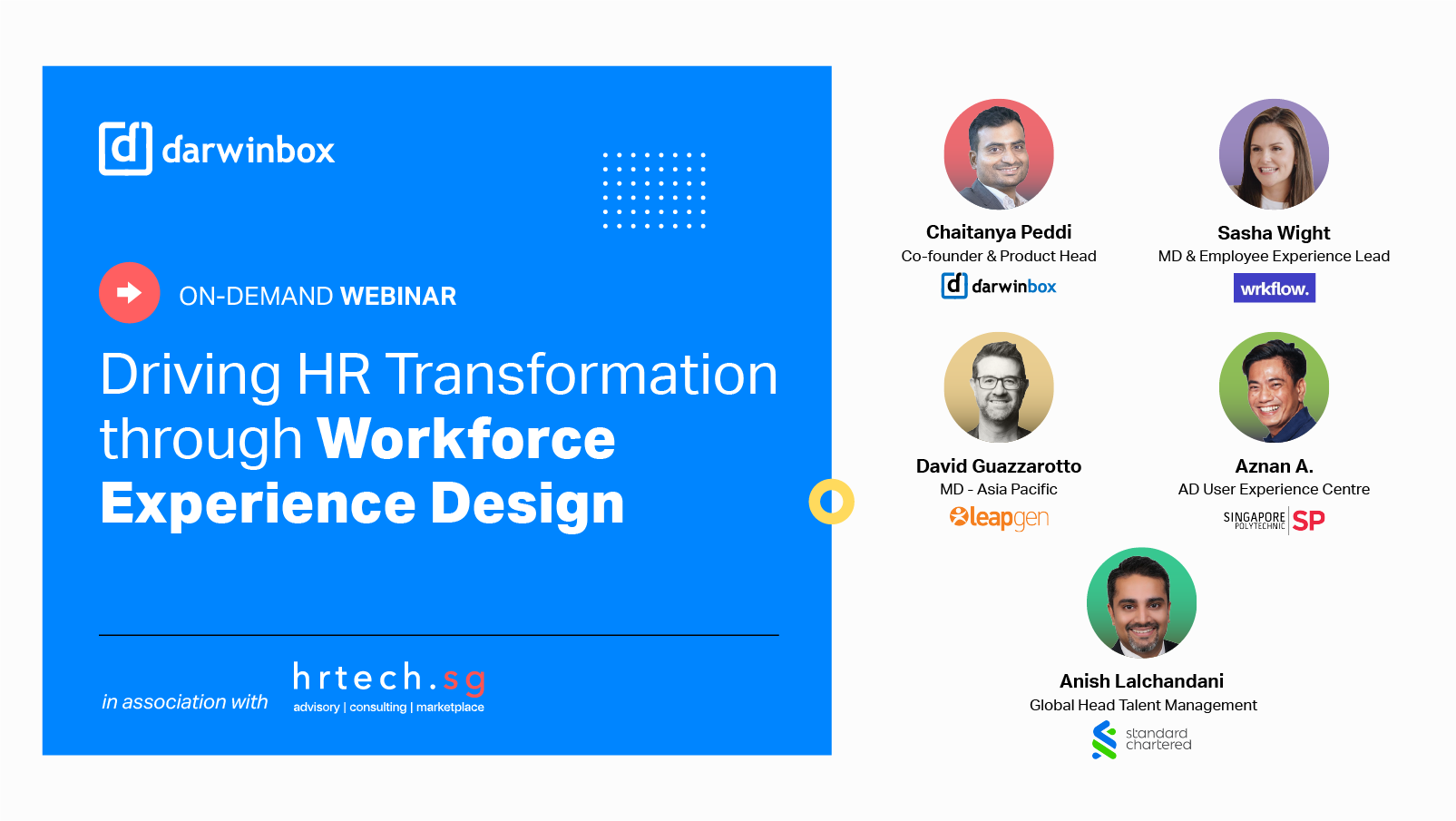

Every business takes great care to craft an excellent customer journey. The most successful organizations have made every touchpoint with the brand an absolute delight.
But what of the experience of the workforce that is the engine of the organization?
This is about every single touchpoint that everyone in your organization has. Immediately we can see how complex this can get. Workforce experience is different for levels of seniority and tenure with the company. It is different across geographies and cultures. And with the lines blurring between what an individual on the company roster and a freelancer can do, it has to include the gig workforce as well.
With the pandemic having overhauled the way we work, making hybrid-working more of the norm than the exception, all of us have an opportunity to reimagine the way we’ve been thinking about workforce experience.
It might seem overwhelming to consider all at once, but just take a step back and look at what is at the center of it: people. And if there’s one thing we can be sure of, people mostly want (and need) the same things.
Therefore, the only reasonable way to go about designing the workforce experience based on people-centered design principles is to stitch together the moments that matter into a journey. And, of course, you need people-centered tech to execute a lot of what comes under good workforce experience.
We got together with leaders and experts from across industries for a virtual session to talk about what this would be like. Presented here are the highlights of that discussion, coming with a wide range of perspectives from David Guazzarotto, MD - Asia Pacific at Leapgen; Sasha Wight, MD & Employee Experience Lead at wrkflow; Anish Lalchandani, Global Head Talent Management, Standard Chartered; Aznan A., AD User Experience Centre, Singapore Polytechnic; and Chaitanya Peddi, Co-founder and Product Head, Darwinbox.
1. Workforce experience starts with workforce
There are several models to approach workforce experience design—in fact, David Guazzarotto presented Leapgen’s model, which you can learn more about in the webinar.
But even before jumping into models, and diagrams, and design thinking, which can all be very exciting stuff, it’s important to think about why workforce experience is important for your organization.
It’s a “crawl before you run” kind of mentality. The way to go about it is roughly:
- Ask what is it you want to create with your workforce experience, and then think about a few design principles you want to take forward.
- This is very important: Do a bit of listening! Ask your employees (with surveys, focus groups, or interviews) to understand where your organization is at. Then focus on the experiences that are going to have the biggest impact. Don’t just guess what everyone cares about, make sure your key area of focus is shared by the whole organization as a priority.
- If it’s your first time on a workforce experience voyage, go for what poses the lowest risk, has the least implication on technology, and is something that can be piloted.
- Pilot something! Don’t just get stop at the framework. You need proof of concept.
2. Curate your workforce experience
Just the way you would take care to curate the experience of a customer based on their persona and stage of relationship with the company, so you must do the same with your employees’ experience.
Be empathetic. Keep the employee at the center of the design process at all times.
But there is no one-size-fits-all solution. And it’s not simply a matter of flipping your customer experience tool kit around to your employees.
For example, remote working is a completely different affair for a senior VP and a new recruit who may even be living with multiple other people. Their setups and situations will be completely different. Those considerations must be made.
A lot of this will only come out when, as we mentioned in the previous point, you talk to people. Just the HR team alone can’t possibly understand the real needs and concerns of a variegated workforce. And that’s really when the multiple dimensions of workforce experience will come out. You may find that the themes that come up were not even ones you had considered before.
This is how you will create more representative personas. You can’t design workforce experience at the expense of one or more personas, but at the same time, it’s not feasible to completely personalize it for everyone. The trick is to have granular and meaningful segments.
3. Tech is essential to workforce experience
There are several cuts you can consider defining your segments.
For example, you have seniority or hierarchy in the company. There are, of course, demographic attributes. Psychometric segmentation, like segmenting by management style, can make for even more personalized and relevant journeys.
Complementing these cuts is the footprint that a user leaves on the enterprise system. How engaged are they, what are the operations they perform, how often and for how long? In a world where every digital interaction is being captured and used for insight mining, your own enterprise system has a wealth of data inside of it.
Data is scattered around the organization and non-uniform, and the biggest pain of businesses has been consolidating this data and making sense of it. But it will help set transparent journeys and goals on these journeys, as well as help you deliver them.
Finally, tech will help you accurately measure ROI of your workforce experience design efforts. What was the expected outcome? Lowering churn? Increasing engagement? A better offer-to-joining ratio?
An end-to-end tech system, or solid integrations between different components with APIs, will ensure that they can seamlessly share data and talk to each other, thus giving you tremendous control and agility in your workforce experience design.
4. Don’t forget HR!
Employee experience is not just for employees, but for the HR team too. There may be a tendency to unintentionally leave out HR while designing experience, because after all they are the ones usually tasked with exercise.
The idea is to bring HR into the conversation early on. We must empower HR in their own space so that they may empower others.
Workforce experience is a vast subject—literally any employee interaction with the organization, their work, or their colleagues is a part of it. Darwinbox endeavours to realize the same in a technical interface that liberates and powers HR teams as well as the employees they serve.
This virtual session with our industry compatriots has been a wonderful exercise in unearthing different perspectives on this topic.




Speak Your Mind